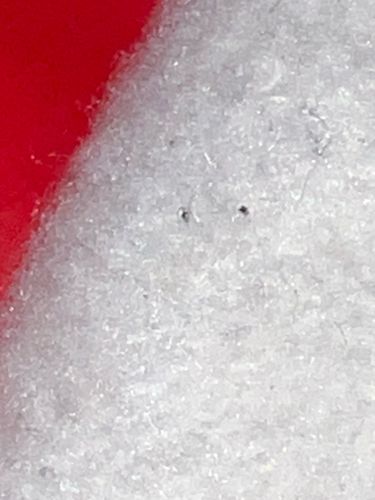Mold Mites / Dust Mites (though likely mold mites based on visual cues)
Scientific Name: Various species (e.g., "Tyrophagus putrescentiae" for Mold Mites; "Dermatophagoides spp." for Dust Mites)
Order & Family: Order: Sarcoptiformes; Suborder: Astigmata; Families: Acaridae (Mold Mites), Pyroglyphidae (Dust Mites)
Size: 0.2 to 0.5 mm (microscopic, barely visible to the naked eye as tiny specks)

Natural Habitat
Damp, humid environments with organic matter (mold mites); mattresses, carpets, upholstered furniture, bedding (dust mites). Both thrive in environments with relative humidity above 60%.
Diet & Feeding
Fungi/mold (mold mites); shredded human and animal skin flakes (dust mites).
Behavior Patterns
They are typically slow-moving and prefer dark, undisturbed areas. They reproduce quickly in favorable conditions. Mold mites are often associated with spoiled food or damp building materials, while dust mites are ubiquitous in homes.
Risks & Benefits
Potential Risks: Both can trigger allergic reactions in sensitive individuals, leading to asthma, eczema, and rhinitis. They do not bite or transmit diseases directly. Mold mites can infest food products. Benefits: None known for humans in these contexts; they are generally considered pests due to their potential to cause allergies and infest goods.
Identified on: 10/22/2025